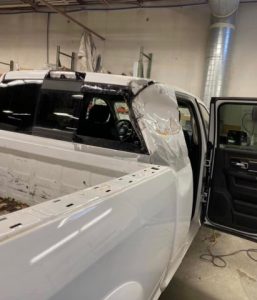When you take your vehicle to the repair shop, you might come across the term “R&I” on your service invoice. But what exactly does “R&I” mean in the context of automotive repair? Understanding this term can help you know what’s being done to your vehicle and why it’s important. In this article, we’ll break down the meaning of r&i meaning automotive, its role in the automotive industry, and how it affects your vehicle.
What Does R&I Stand For?
R&I stands for “Remove and Install.” In the world of automotive repair, this term is used when a part of the vehicle is removed for repair, replacement, or access to another area of the vehicle. After the work is completed, the same part is then reinstalled in its original position. This process is common in many types of vehicle repairs, from simple fixes to more complex procedures.
Why is R&I Important?
R&I is an essential part of many automotive repair jobs. Here’s why:
1. Accessing Hidden Areas
Sometimes, to fix or replace a part of your vehicle, other components must be removed first. For example, if a technician needs to repair the engine, they may need to remove certain parts of the bodywork to reach it. The R&I process allows them to do this safely and efficiently.
2. Ensuring Proper Fit and Function
When a part is removed and reinstalled, it’s crucial that it is done correctly. A proper R&I job ensures that all components fit back together as they should, maintaining the vehicle’s integrity and performance. If not done correctly, it could lead to issues down the line, such as misalignment or improper functioning of parts.
3. Saving Time and Money
By removing and reinstalling the same part, rather than replacing it entirely, R&I can save both time and money. It’s a cost-effective solution when the part itself is still in good condition but needs to be moved for access or repair purposes.
The R&I Process: Step by Step
Understanding the R&I process can give you a clearer picture of what happens during your vehicle’s repair. Here’s a simplified breakdown:
1. Assessment
Before any work begins, the technician will assess the vehicle to determine what needs to be done. They’ll identify which parts need to be removed to access the area that requires repair.
2. Removal
Once the assessment is complete, the removal process begins. The technician carefully removes the necessary parts, taking care not to damage them. This step requires precision and attention to detail, as improper removal can lead to problems later on.
3. Repair or Replacement
With the parts removed, the technician can now access the area that needs repair. Whether it’s fixing a broken component, replacing a worn-out part, or addressing an issue with the vehicle’s bodywork, this step is where the actual repair work takes place.
4. Installation
After the repair is complete, the technician will reinstall the parts that were removed. This step is just as important as the removal, as it ensures that everything fits back together properly. The technician will make sure that all components are securely fastened and aligned.
5. Final Inspection
Once the installation is complete, the vehicle undergoes a final inspection. The technician checks that everything is in working order and that the repaired area functions as it should. This step ensures that the vehicle is safe and ready to be driven.
Common R&I Jobs in Automotive Repair
R&I is used in various types of automotive repair. Here are a few common examples:
1. Bodywork Repairs
If your vehicle has been in an accident, R&I might be necessary to repair the damage. For example, if the door needs to be repaired, the technician may need to remove the door panel to access the damaged area. After the repair, the door panel is reinstalled.
2. Engine Repairs
In some cases, parts of the engine or the components surrounding it need to be removed to access a problem. R&I allows the technician to carefully remove these parts, perform the necessary repairs, and then reinstall them correctly.
3. Interior Work
R&I is also common in interior repairs, such as fixing or replacing the dashboard, seats, or other interior components. Removing these parts allows the technician to work on the vehicle’s interior without causing damage.
How R&I Affects the Cost of Repair
R&I can influence the overall cost of your vehicle repair. While removing and reinstalling parts might seem like extra work, it’s often a more cost-effective solution than replacing parts entirely. The time and labour involved in R&I are typically reflected in the repair bill, but it’s a necessary step to ensure the repair is done correctly.
1. Labour Costs
The labour involved in R&I is a significant factor in the cost of repair. Skilled technicians spend time carefully removing and reinstalling parts, and this labour is factored into the repair cost. However, this cost is often lower than the cost of purchasing new parts.
2. Part Costs
Since R&I involves reusing the same parts, you avoid the cost of buying new ones. This can save you money, especially if the parts being removed are expensive or hard to find.
Conclusion
R&I, or Dr. Ralph’s and Install, is a common and crucial process in automotive repair. It allows technicians to access hidden areas of the vehicle, ensure proper fit and function, and save both time and money in the repair process. Whether it’s for bodywork, engine repairs, or interior work, R&I plays a vital role in maintaining your vehicle’s performance and safety.
Understanding the R&I process can help you appreciate the work that goes into repairing your vehicle. Next time you see “R&I” on your service invoice, you’ll know exactly what it means and why it matters. Keeping your vehicle in top condition often requires careful removal and installation of parts, and R&I ensures that this is done right.


